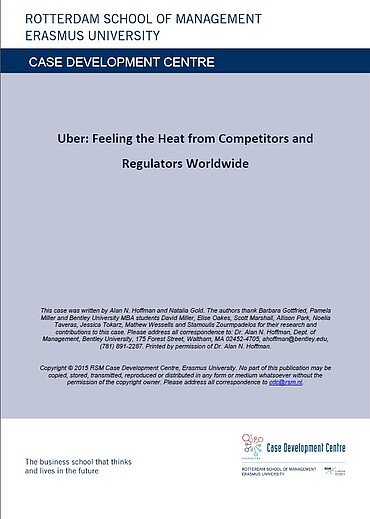description
Uber grew rapidly since its inception in 2009 and by 2015 it was providing carpooling services in 300 major cities in 58 countries around the world. As Uber moved forward into new territories, however, it got entangled in many regulatory and legal hassles. The company had to figure out how to sustain its lead in the heavily regulated, controversial, competitive, and ever-changing car-sharing market. Moreover, despite a landslide market share Uber was operating at a loss. How to lower costs and become profitable was another challenge for this young and aggressive company.
Citation Note
Based on field research; 14 pages.
Follow the 'handle' link to access the Case Study on RePub.
For EUR staff members: the Teaching Note is available on request, you can contact us at rsm.nl/cdc/contact/
For external users: follow the link to purchase the Case Study and the Teaching Note.
Abstract
Uber gets entangled in many regulatory and legal hassles as it moves into new countries. It has to figure out how to sustain its lead in the heavily regulated and ever-changing car-sharing market. Moreover, despite a landslide market share, Uber operates at a loss. The main challenge for this young and aggressive company is how to lower costs and become profitable.
